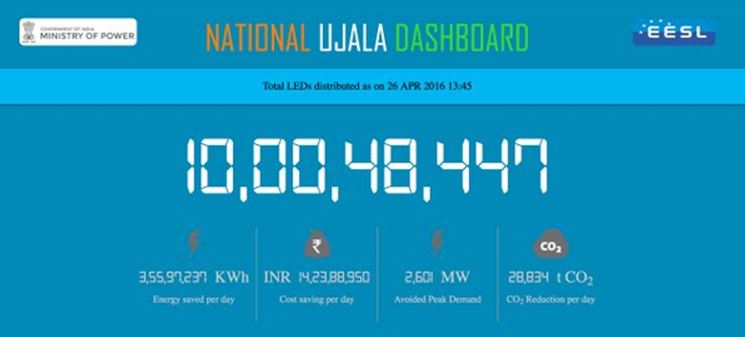
Source: DELP dashboard at http://www.delp.in
The Indian government recognises that systematically integrating energy efficiency and security in its development and diplomatic strategies is essential to expand India’s economic and strategic space. On April 23, 2016, India signed the Paris Climate Act and announced plans to increase renewable power capacity to 175 gigawatts (4 times current capacity) by 2022 as part of the government’s plan to supply electricity to every household. India seeks to add 100 gigawatts (GWs) of solar (photovoltaic) capacity, 60 GWs of wind power, 10 GWs of biomass and five GWs of hydro projects. India hopes to source around two-fifths of its electricity from renewable and low-carbon energy sources and to reduce its emissions intensity, i.e. ratio of carbon emissions per unit of GDP, by around a third by 2030.
India in partnership with France has established the International Solar Alliance (ISA), with over one hundred members, to harness the potential of solar power and to facilitate global investments in this sector. It will be based in Gurugram (formerly Gurgaon) in Haryana, India. India has contributed USD 30 million, and the Alliance aims to raise USD 400 million from membership fees and international agencies. This will be leveraged to generate investments in solar industry globally from many sources.
The LED Bulb and UJALA Initiative:
The Indian government has undertaken various initiatives aimed at reducing the cost of electricity and increasing its access. A national program for household LED bulb distribution under the UJALA (Unnat Jyoti by Affordable LEDs for all) program has been implemented in January 2015. As lighting accounts for an estimated 20 per cent of total electricity consumption in India, a shift to LED-based lights for domestic and public use could result in significant reduction in electricity utilized for lighting. Therefore, the government aims to replace 770 million incandescent bulbs across India with energy- efficient LED blubs. It is estimated that 20 gigawatts will be saved with this switch by 2018 — enough electricity to reduce annual electricity bills by as much as $5.9 billion.
Mukul G. Asher is a Professorial Fellow, Lee Kuan Yew School of Public Policy, National University of Singapore. Keya Chaturvedi is an author and an Independent Researcher. This article was first published in MyIndMakers on 26 April 2016.